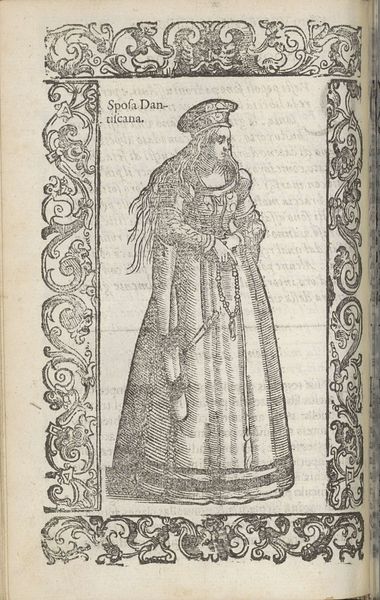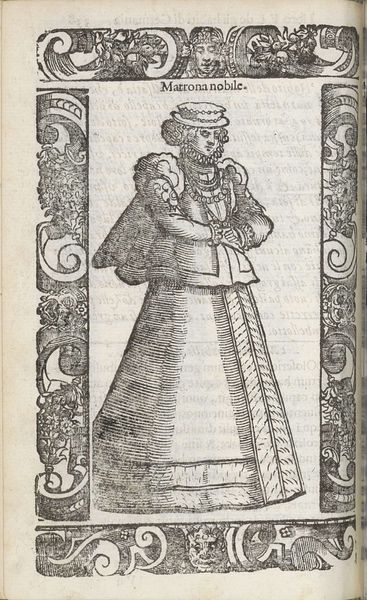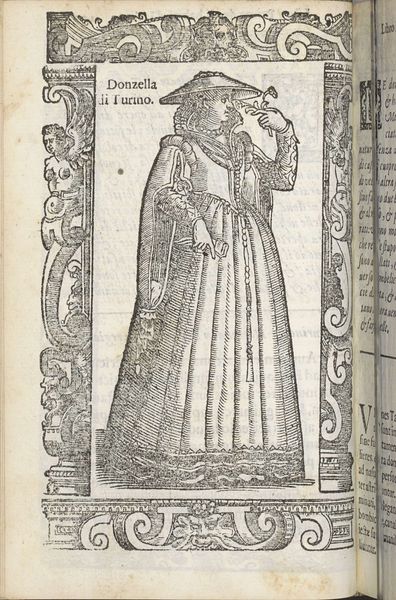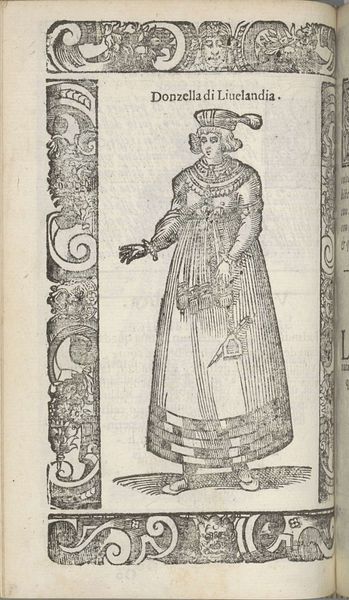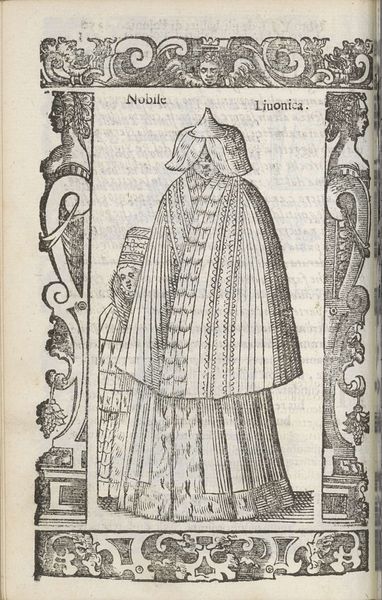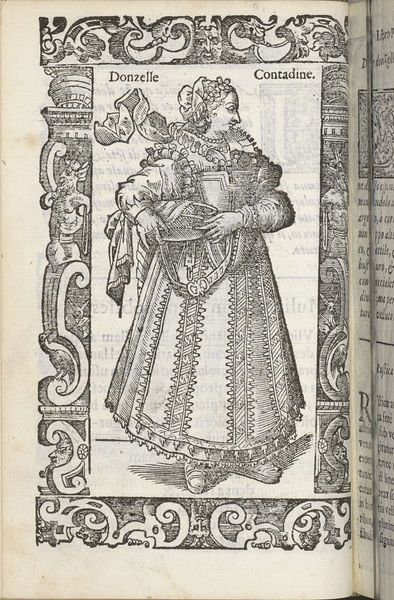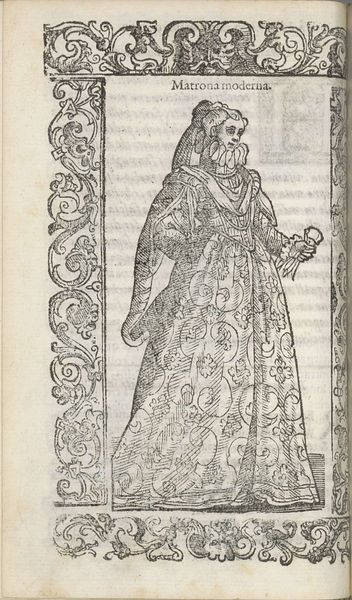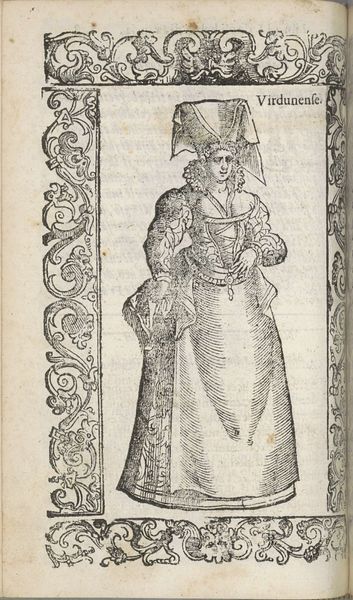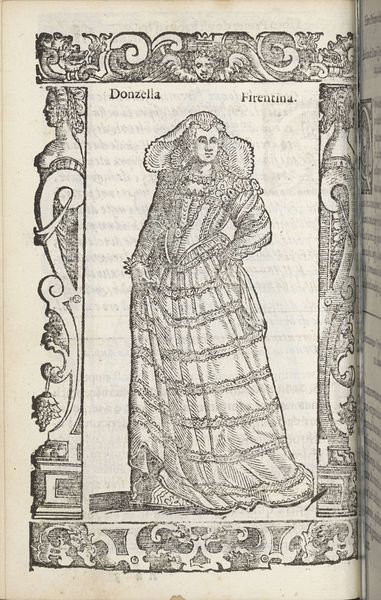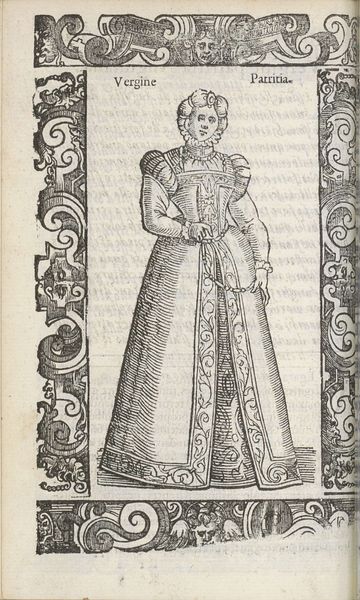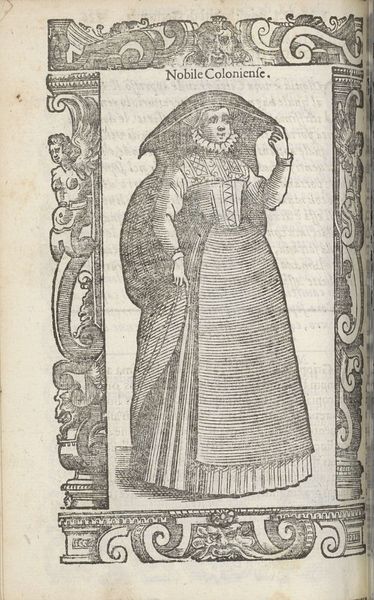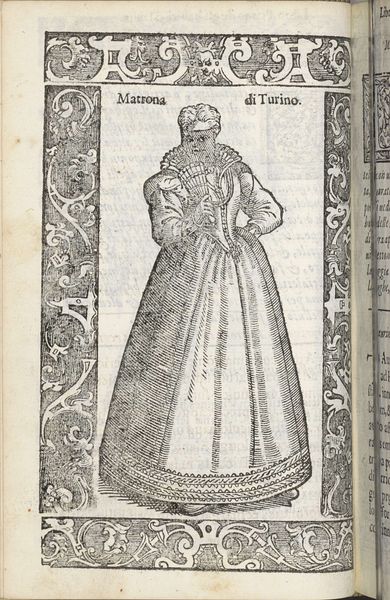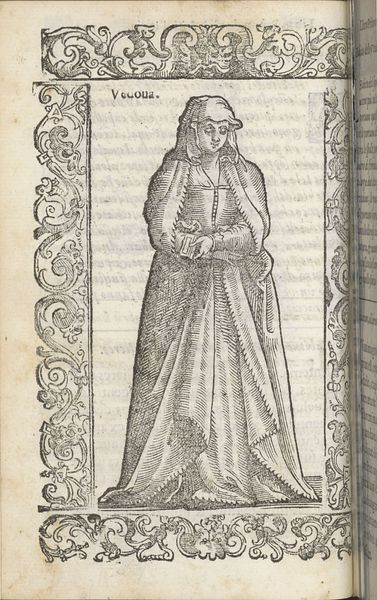
drawing, print, ink, engraving
#
portrait
#
drawing
# print
#
mannerism
#
figuration
#
ink
#
history-painting
#
engraving
Dimensions: height 167 mm, width 125 mm
Copyright: Rijks Museum: Open Domain
Editor: Here we have "Nobile Inglese," an engraving from 1598 by Christoph Krieger. The level of detail is impressive for the medium! The repeating patterns on his robe, the fur trim, and the decorative border, create a strong visual rhythm. How do you interpret this work from a formal perspective? Curator: Precisely. Consider the interplay between line and texture. Krieger masterfully uses line weight and density to suggest form and material. The engraving's formal structure reveals a fascinating tension between the two-dimensionality of the print and the illusion of depth. Observe how the patterns on the robe, while meticulously rendered, flatten the figure somewhat, working against a naturalistic representation. What does that flatness signify, or perhaps underscore? Editor: I see what you mean! The patterns, while decorative, almost act as a visual barrier, emphasizing the surface rather than the depth. Is this emphasis intentional, maybe highlighting the subject’s status through the opulent fabric, while keeping him at a remove? Curator: A perceptive observation. One might argue that the visual structure reflects the social structure, where status is visually proclaimed, yet distance is maintained. Think about how the linear precision and detail contrast with the ambiguous space around the figure. How does this compositional tension affect our understanding? Editor: It’s like the details are shouting for attention, but the lack of background keeps him isolated. I am now contemplating on the way that line becomes both decorative and descriptive! Thank you. Curator: Indeed. Considering the inherent qualities, construction and structure certainly illuminates the intention of the artwork.
Comments
No comments
Be the first to comment and join the conversation on the ultimate creative platform.
